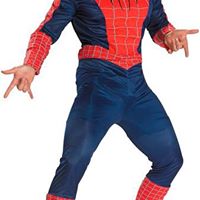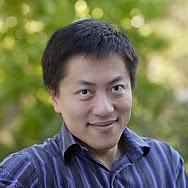Jun Y Yang
age ~52
from Pittsburgh, PA
- Also known as:
-
- Yang Jun
Jun Yang Phones & Addresses
- Pittsburgh, PA
- 1080 Spruce St, Riverside, CA 92507 • (951)3280232
- Tucson, AZ
- Worcester, MA
Work
-
Company:Worcester polytechnic instituteMay 2013
-
Position:Postdoctoral fellow
Education
-
School / High School:Worcester Polytechnic Institute- Worcester, MAApr 2013
-
Specialities:Doctorate in Philosophy, Mechanical Engineering
Skills
FLUENT • GAMBIT • Tecplot • SigmaPlot • AutoCAD • COMSOL • Matlab • CorelDraw • SolidWorks • ANSYS • Maple • MathCAD • Linux • FORTRAN • Visual Basic • C++
Ranks
-
Licence:New York - Currently registered
-
Date:2009
Specialities
Corporate Law • Insurance Regulation • Transnational Joint Ventures • Structured Finance
Lawyers & Attorneys

Jun Yang - Lawyer
view sourceLicenses:
New York - Currently registered 2009

Jun Yang - Lawyer
view sourceSpecialties:
Corporate Law
Insurance Regulation
Transnational Joint Ventures
Structured Finance
Insurance Regulation
Transnational Joint Ventures
Structured Finance
ISLN:
902588460
Admitted:
1990
University:
Beijing University, B.A., 1982
Law School:
Columbia University School of Law, J.D., 1989
License Records
Jun Yang
License #:
46819 - Active
Category:
Professional
Issued Date:
Aug 22, 2007
Expiration Date:
Sep 30, 2019
Medicine Doctors

Jun Yang
view sourceSpecialties:
Internal Medicine, Nephrology
Work:
Cooper University Physicians
218C Sunset Rd, Willingboro, NJ 08046
(609)8770400 (phone), (609)8773542 (fax)
Two River Allergy & Asthma Group
709 Sycamore Ave, Red Bank, NJ 07701
(732)7478188 (phone), (732)7475946 (fax)
Cooper University Hospital Hospitalist
1 Cooper Plz STE 222, Camden, NJ 08103
(856)3423150 (phone), (856)9688418 (fax)
Jun Yang MD
13443 Maple Ave STE C1D, Flushing, NY 11355
(718)8867588 (phone), (718)8867580 (fax)
218C Sunset Rd, Willingboro, NJ 08046
(609)8770400 (phone), (609)8773542 (fax)
Two River Allergy & Asthma Group
709 Sycamore Ave, Red Bank, NJ 07701
(732)7478188 (phone), (732)7475946 (fax)
Cooper University Hospital Hospitalist
1 Cooper Plz STE 222, Camden, NJ 08103
(856)3423150 (phone), (856)9688418 (fax)
Jun Yang MD
13443 Maple Ave STE C1D, Flushing, NY 11355
(718)8867588 (phone), (718)8867580 (fax)
Education:
Medical School
Shanghai Med Univ, Shanghai First Med Univ, Shanghai, China
Graduated: 1991
Shanghai Med Univ, Shanghai First Med Univ, Shanghai, China
Graduated: 1991
Procedures:
Arthrocentesis
Conditions:
Osteomyelitis
Pneumonia
Skin and Subcutaneous Infections
Acute Bronchitis
Acute Myocardial Infarction (AMI)
Pneumonia
Skin and Subcutaneous Infections
Acute Bronchitis
Acute Myocardial Infarction (AMI)
Languages:
English
Spanish
Spanish
Description:
Dr. Yang graduated from the Shanghai Med Univ, Shanghai First Med Univ, Shanghai, China in 1991. He works in Willingboro, NJ and 3 other locations and specializes in Internal Medicine and Nephrology. Dr. Yang is affiliated with Cooper University Hospital, Inspira Medical Center Vineland, Lourdes Medical Center Burlington, Monmouth Medical Center, Our Lady Of Lourdes Medical Center and Virtua

Jun Yang
view sourceSpecialties:
Orthopaedic Surgery
Work:
Kaiser Permanente Medical Group
901 Nevin Ave, Richmond, CA 94801
(510)3071500 (phone), (510)3072409 (fax)
901 Nevin Ave, Richmond, CA 94801
(510)3071500 (phone), (510)3072409 (fax)
Education:
Medical School
University of Texas Medical Branch at Galveston
Graduated: 2001
University of Texas Medical Branch at Galveston
Graduated: 2001
Procedures:
Hip/Femur Fractures and Dislocations
Knee Arthroscopy
Knee Replacement
Arthrocentesis
Knee Arthroscopy
Knee Replacement
Arthrocentesis
Conditions:
Fractures, Dislocations, Derangement, and Sprains
Internal Derangement of Knee Cartilage
Osteoarthritis
Internal Derangement of Knee Cartilage
Osteoarthritis
Languages:
English
Description:
Dr. Yang graduated from the University of Texas Medical Branch at Galveston in 2001. He works in Richmond, CA and specializes in Orthopaedic Surgery. Dr. Yang is affiliated with John Muir Medical Center Concord and Kaiser Permanente Richmond Medical Center.

Jun Yang
view sourceSpecialties:
Psychiatry
Work:
Acro Consultants
941 S Atlantic Blvd STE 221, Monterey Park, CA 91754
(626)2844202 (phone), (626)2843926 (fax)
941 S Atlantic Blvd STE 221, Monterey Park, CA 91754
(626)2844202 (phone), (626)2843926 (fax)
Education:
Medical School
Anhui Coll of Traditional Chinese Med, Hefei City, Anhui, China
Graduated: 1985
Anhui Coll of Traditional Chinese Med, Hefei City, Anhui, China
Graduated: 1985
Conditions:
Attention Deficit Disorder (ADD)
Dementia
Depressive Disorders
Schizophrenia
Anxiety Dissociative and Somatoform Disorders
Dementia
Depressive Disorders
Schizophrenia
Anxiety Dissociative and Somatoform Disorders
Languages:
Chinese
English
English
Description:
Dr. Yang graduated from the Anhui Coll of Traditional Chinese Med, Hefei City, Anhui, China in 1985. He works in Monterey Park, CA and specializes in Psychiatry. Dr. Yang is affiliated with Alhambra Hospital Medical Center and Garfield Medical Center.

Jun Yang
view sourceSpecialties:
Internal Medicine
Infectious Disease
Psychiatry
Infectious Disease
Psychiatry
Education:
Anhui College Of Traditional Chinese Medicine (1985)

Jun Yang
view sourceSpecialties:
Internal Medicine
Nephrology
Pulmonary Disease
Nephrology
Pulmonary Disease
Education:
Shanghai Medical University (1986)
Name / Title
Company / Classification
Phones & Addresses
President
International Association for Pharmaceutical Medicine
President
Building Networks, Inc
Engineering Services Mgmt Consulting Svcs Business Consulting Svcs
Engineering Services Mgmt Consulting Svcs Business Consulting Svcs
19936 Terra Bella Ct, Yorba Linda, CA 92886
BL APPLIED ENGINEERING, INC
Jun Yang MD
Psychiatrist · Internist
Psychiatrist · Internist
14785 Jeffrey Rd, Irvine, CA 92618
(949)5525108
(949)5525108
DR MANAGER LLC
Treasurer
USLINKCN.COM, INC
52 Franklin St, Framingham, MA 01702
INTERNATIONAL BUFFET, INC
Owner
Prioritytradinginc Com
Ret Mail-Order House
Ret Mail-Order House
46 Foxtail Ln, Trabuco Canyon, CA 92679
Isbn (Books And Publications)

Advances in Web-age Information Management: 6th International Conference, Waim 2005, Hangzhou, China, October 11-13, 2005, Proceedings
view sourceAuthor
Jun Yang
ISBN #
3540292276
Resumes

Jun Yang Shrewsbury, MA
view sourceWork:
Worcester Polytechnic Institute
May 2013 to 2000
Postdoctoral Fellow Worcester Polytechnic Institute
Jun 2010 to 2000
Research Assistant Worcester Polytechnic Institute
Worcester, MA
Aug 2008 to May 2010
Teaching Assistant Dalian University of Technology
Dalian, Liaoning, China
Aug 2005 to Jun 2008
Research Assistant Chemical Plant
Dalian, Liaoning, China
Feb 2005 to Jun 2005
Design Assistant, Tiao shan Cang Zhou Chemical Plant
Cangzhou, Hebei, China
Aug 2004 to Dec 2004
Production Practice
May 2013 to 2000
Postdoctoral Fellow Worcester Polytechnic Institute
Jun 2010 to 2000
Research Assistant Worcester Polytechnic Institute
Worcester, MA
Aug 2008 to May 2010
Teaching Assistant Dalian University of Technology
Dalian, Liaoning, China
Aug 2005 to Jun 2008
Research Assistant Chemical Plant
Dalian, Liaoning, China
Feb 2005 to Jun 2005
Design Assistant, Tiao shan Cang Zhou Chemical Plant
Cangzhou, Hebei, China
Aug 2004 to Dec 2004
Production Practice
Education:
Worcester Polytechnic Institute
Worcester, MA
Apr 2013
Doctorate in Philosophy, Mechanical Engineering Dalian University of Technology
Dalian, Liaoning, China
2008
Master of Science in Chemical Engineering Hebei University of Technology
2005
Bachelor of Science in Chemical Engineering
Worcester, MA
Apr 2013
Doctorate in Philosophy, Mechanical Engineering Dalian University of Technology
Dalian, Liaoning, China
2008
Master of Science in Chemical Engineering Hebei University of Technology
2005
Bachelor of Science in Chemical Engineering
Skills:
FLUENT, GAMBIT, Tecplot, SigmaPlot, AutoCAD, COMSOL, Matlab, CorelDraw, SolidWorks, ANSYS, Maple, MathCAD, Linux, FORTRAN, Visual Basic, C++
Us Patents
-
Vascular Graft Assemblies And Methods For Implanting Same
view source -
US Patent:6371981, Apr 16, 2002
-
Filed:Nov 2, 1999
-
Appl. No.:09/431313
-
Inventors:Jun Yang - Dove Canyon CA
George Guo - Dove Canyon CA -
Assignee:AV Healing LLC - Dove Canyon CA
-
International Classification:A61F 206
-
US Classification:623 113, 623 132
-
Abstract:A graft system is provided that includes either a support ring or a support sleeve that is used in providing transitional support to either an end or a side of a graft or a host vessel. The support ring is provided with a generally cylindrical wall and defining a passageway that is adapted for receiving an end of a vein graft or an end of a host vessel. The support ring has a first end and a second end, with the thickness of the wall being greater at the first end than at the second end. The support sleeve is provided with a first side edge, a second side edge, and an opening. The support sleeve surrounds a side opening of a graft or host vessel so that the opening of the support sleeve is aligned with the side opening of the graft or host vessel. The thickness of the support sleeve is greater at the opening than at the first and second side edges.
-
Stent Having Cover With Drug Delivery Capability
view source -
US Patent:6379382, Apr 30, 2002
-
Filed:Mar 13, 2000
-
Appl. No.:09/524650
-
Inventors:Jun Yang - Dove Canyon CA 92679
-
International Classification:A61F 206
-
US Classification:623 142, 623 113
-
Abstract:A prosthesis has a cylindrical stent, and a cover provided about the outer periphery of the stent. The cover has at least two layers of materials, with at least one layer of material being permeable to drugs. The layers of material can define at least one chamber therebetween, with a drug loaded into the at least one chamber. Alternatively, the drug can be loaded into the material of one or more layers.
-
Stent Having Cover With Drug Delivery Capability
view source -
US Patent:6613082, Sep 2, 2003
-
Filed:Mar 13, 2000
-
Appl. No.:09/524244
-
Inventors:Jun Yang - Dove Canyon CA 92679
-
International Classification:A61F 206
-
US Classification:623 142
-
Abstract:A prosthesis has a cylindrical stent and a cover provided about the outer periphery of the stent. The cover can be made from a water absorbent material, and a matrix of protein. The cover can be made from either tissue or hydrogel.
-
Stent Having Cover With Drug Delivery Capability
view source -
US Patent:6613084, Sep 2, 2003
-
Filed:Nov 28, 2001
-
Appl. No.:09/997072
-
Inventors:Jun Yang - Dove Canyon CA 92679
-
International Classification:A61F 206
-
US Classification:623 142, 623 113
-
Abstract:A prosthesis has a stent, and a cover that covers a portion of the stent. The cover has at least two layers of materials that can define at least one chamber therebetween, with a drug loaded into the at least one chamber by a dug dispersing element. The cover can be provided inside the luminal walls of the stent, or the stent can be retained in the at least one chamber. The cover can also be deployed to treat vulnerable plaque.
-
Vascular Tissue Composition
view source -
US Patent:20020091444, Jul 11, 2002
-
Filed:Jan 5, 2001
-
Appl. No.:09/755818
-
Inventors:Jun Yang - Dove Canyon CA, US
-
International Classification:A61F002/02
A61F002/08
A61F002/28 -
US Classification:623/011110, 623/013170, 623/014120, 623/016110
-
Abstract:A tissue composition includes the subendothelial layer, the elastica interna, and at least a portion of the tunica media of a blood vessel harvested from a mammal, with the endothelial cells removed from the blood vessel. The tissue composition can also include a portion of the tunica adventitia of a blood vessel harvested from a mammal. The tissue composition can be formed into a graft, a patch, a connective tissue for surgical repair, an orthopedic graft, and a substrate for cell growth, among other applications. The tissue composition can also be fluidized, or made into powdered form.
-
Vascular Tissue Composition
view source -
US Patent:20020183857, Dec 5, 2002
-
Filed:Jul 15, 2002
-
Appl. No.:10/195276
-
Inventors:Jun Yang - Dove Canyon CA, US
-
International Classification:A61F002/02
-
US Classification:623/023720, 623/013170, 623/014120, 623/916000, 435/378000
-
Abstract:A tissue composition includes the subendothelial layer, the elastica interna, and at least a portion of the tunica media of a blood vessel harvested from a mammal, with the endothelial cells removed from the blood vessel. The tissue composition can also include a portion of the tunica adventitia of a blood vessel harvested from a mammal. The tissue composition can be formed into a graft, a patch, a connective tissue for surgical repair, an orthopedic graft, and a substrate for cell growth, among other applications. The tissue composition can also be fluidized, or made into powdered form.
-
Stent Having Cover With Drug Delivery Capability
view source -
US Patent:20030009213, Jan 9, 2003
-
Filed:Sep 5, 2002
-
Appl. No.:10/236611
-
Inventors:Jun Yang - Dove Canyon CA, US
-
International Classification:A61F002/06
-
US Classification:623/001130, 623/001420
-
Abstract:A prosthesis has a tubular stent and a cover provided about the outer periphery of the stent. The cover can be made from a water absorbent material, and/or a matrix of protein. The present invention also provides a method for treating a vulnerable plaque, the method including implanting the prosthesis over the vulnerable plaque.
-
Graft Element
view source -
US Patent:20030078659, Apr 24, 2003
-
Filed:Oct 23, 2001
-
Appl. No.:10/000518
-
Inventors:Jun Yang - Dove Canyon CA, US
-
International Classification:A61F002/08
-
US Classification:623/013170, 623/902000, 623/901000
-
Abstract:A method of forming an elongated graft element includes procuring a tubular tissue from a mammal, with the tubular tissue having a longitudinal axis, and a distal edge and a proximal end on opposing ends of the longitudinal axis. Thereafter, the tubular tissue is split along a line that is parallel to the longitudinal axis to form a sheet, and the distal edge and the proximal edge are approximated towards each other to form an elongated graft element. The elongated graft element has a longitudinal axis that comprises the circumferential orientation of the tubular tissue, with the circumferential orientation being transverse to the longitudinal axis of the tubular tissue.
Plaxo

Yang Jun
view sourceyancheng jingwei chemicals co

JUN YANG
view sourcePeking, China
Myspace
Flickr
News

Researchers Have Cracked the Sweet Potato’s Unusually Complex DNA
view source- Reference: Phased chromosome-level assembly provides insight into the genome architecture of hexaploid sweetpotato by Shan Wu, Honghe Sun, Xuebo Zhao, John P. Hamilton, Marcelo Mollinari, Gabriel De Siqueira Gesteira, Mercy Kitavi, Mengxiao Yan, Hongxia Wang, Jun Yang, G. Craig Yencho, C. Robin Bu
- Date: Aug 31, 2025
- Category: Science
- Source: Google

Korean Companies Face China Crisis as Missile Boycott Grows
view source- The Reuters columnist Jun Yang says the China crisis may be a blessing in disguise, allowing Lotte to ditch an unprofitable operation. When the two sons of Lotte's founder came to loggerheads in 2015, the elder brother said Lotte had lost more than $870 million in China in the four years through 201
- Date: Mar 06, 2017
- Category: Business
- Source: Google

Quantum Dot Solids: This Generation's Silicon Wafer?
view source- Whitham, a doctoral candidate in the field of materials science and engineering, did most of the experimentation and is lead author of the work. Also contributing were: Jun Yang, postdoctoral researcher; Benjamin H. Savitzky, graduate student in the field of physics; Lena Kourkoutis, assistant profe
- Date: Feb 25, 2016
- Category: Sci/Tech
- Source: Google

Canadian man gets probation for smuggling Chinese dinosaur fossils
view source- Jun Yang, 36, of Richmond, British Columbia, pleaded guilty in August to one felony count of illegally importing 17 fossil specimens into the United States, one of them dating back at least 100 million years, according to federal court documents.
- Date: Feb 23, 2016
- Category: Business
- Source: Google

60 billion alien planets could support life forms, study finds
view source- Nicolas Cowan a postdoctoral fellow at Northwestern Universitys Center for Interdisciplinary Exploration and Research in Astrophysics, is one of co-authors of the study, along with University of Chicagos Dorian Abbot and Jun Yang. In their calculations, the trio provide astronomers with a way to v
- Date: Jul 03, 2013
- Category: Sci/Tech
- Source: Google

60 BILLION alien planets could support life, astronomers say
view source- However, if highly reflective clouds rule the dayside of the alien planet, they will block a lot of infrared radiation from the surface, according to Jun Yang, a postdoctoral scientists in geophysical science at the University of Chicago. Yang says that if this is the case, astronomers would measure
- Date: Jul 02, 2013
- Category: Sci/Tech
- Source: Google

Sixty B Planets May Be Habitable in Milky Way
view source- Cowan joins UChicagos Dorian Abbot and Jun Yang as co-authors on the study. The scholars also provide astronomers with a means of verifying their conclusions with the James Webb Space Telescope, scheduled for launch in 2018.
- Date: Jul 02, 2013
- Source: Google

Lots more habitable planets out there, thanks to clouds
view source- In that situation; "you would measure the coldest temperatures when the planet is on the opposite side, and you would measure the warmest temperatures when you are looking at the night side, because there you are actually looking at the surface rather than these high clouds," team member Jun Yang e
- Date: Jul 01, 2013
- Source: Google

Wg Jun Yang
view sourceWong Jun Yang

Jun Mo Yang
view source
Jun Kyu Yang
view source
Jun Rhong Yang
view source
Jun Yang
view source
Jun Jun Yang
view source
Jun Yong Yang
view source
Chua Jun Yang
view sourceClassmates

Jun Ho Yang
view sourceSchools:
Woun-Tong High School Woun-tong MD 2000-2004, Shady Side Academy Pittsburgh PA 2005-2005
Community:
Niyara Nina, Brandy Butler, Enkhbold Enkhbold, Eunjung Kim, Tyler Spears

Jun Yang (Junyang)
view sourceSchools:
Aaronsville High School Aaronsville AL 1981-1985

Eleele Elementary School,...
view sourceGraduates:
Yang Jun (1999-2002),
Max Richards (1958-1968),
Andres Touzet Andres Touzet (1985-1986),
Robert Isgay (1968-1970),
Klarisse Nobriga (1995-2001)
Max Richards (1958-1968),
Andres Touzet Andres Touzet (1985-1986),
Robert Isgay (1968-1970),
Klarisse Nobriga (1995-2001)
Googleplus

Jun Yang
Relationship:
Its_complicated
About:
新浪博客地址;http://blog...
Bragging Rights:
我生活!我乐现!

Jun Yang
Education:
University of California, Berkeley - Computer

Jun Yang
About:
I love baseball and EDM
Tagline:
17. A coward
Bragging Rights:
Fan of Avicii

Jun Yang
Education:
Nanjing University

Jun Yang
Work:
Duke University - Computer Science Professor

Jun Yang
About:
Photography Around the World
Tagline:
Visionrolls.tumblr.com

Jun Yang

Jun Yang
Youtube
Get Report for Jun Y Yang from Pittsburgh, PA, age ~52














